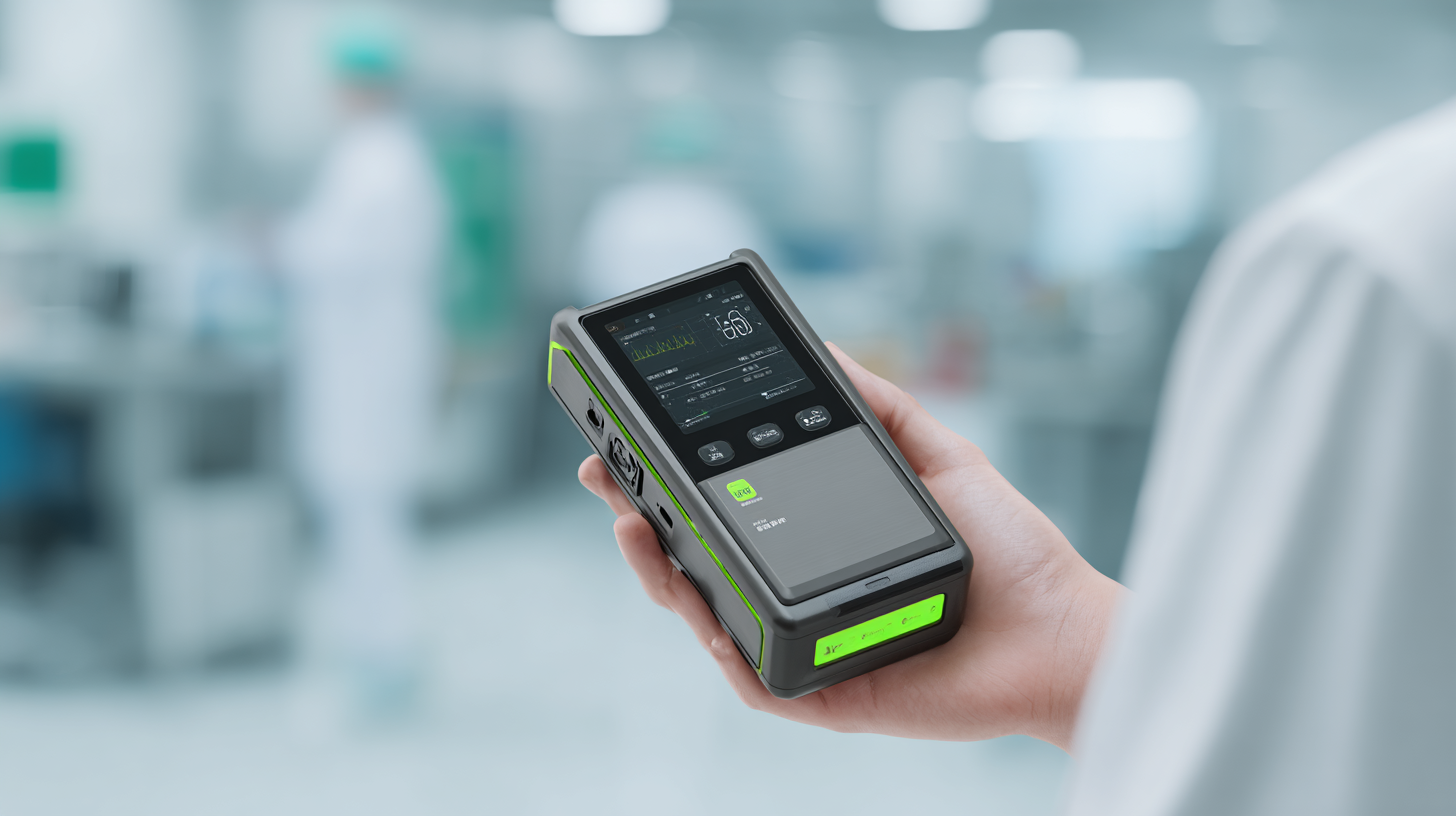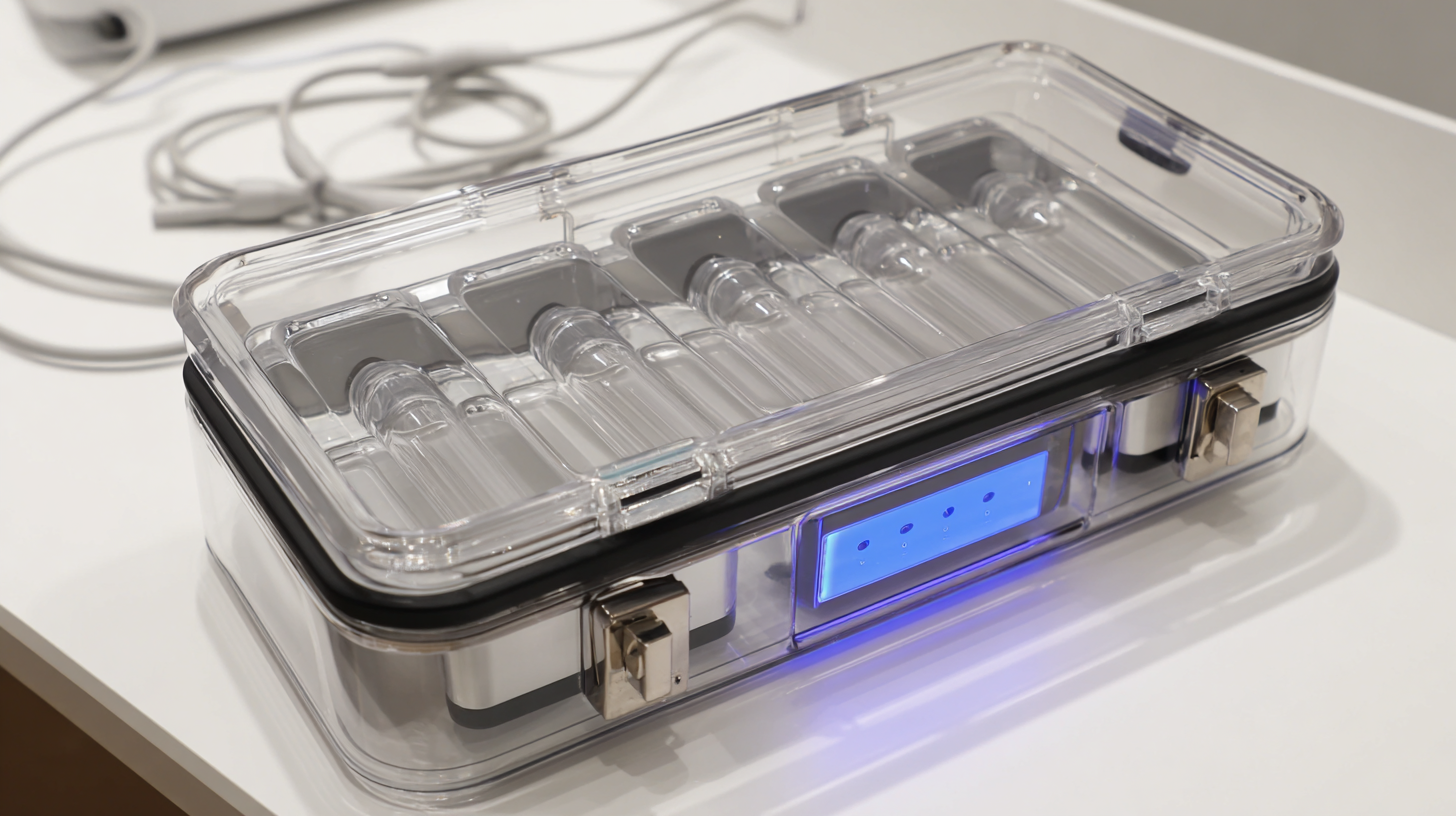In the evolving landscape of respiratory healthcare, the development of the Handheld Sputum Extractor is becoming increasingly critical. According to a report by MarketsandMarkets, the global respiratory care devices market is projected to reach $31.3 billion by 2025, driven by rising prevalence of respiratory diseases and a growing emphasis on early diagnosis. However, navigating the myriad of industry standards in this sector presents significant challenges for manufacturers. Regulatory compliance, technological innovation, and user safety are paramount concerns that need to be addressed to create an effective Handheld Sputum Extractor. Moreover, emerging alternatives in the market further complicate the development process, necessitating a careful analysis of both current trends and future predictions to ensure that these devices meet clinician and patient needs effectively. As we delve into the core challenges and technological trends shaping the handheld sputum extraction industry, we will uncover opportunities that can lead to innovative solutions in 2025 and beyond.

When developing a high-quality handheld sputum extractor, several key features must be prioritized to ensure effectiveness and user-friendliness. First and foremost, the design should facilitate easy handling and positioning by healthcare providers. An ergonomic grip is essential, allowing for comfort during prolonged use, which is particularly important in clinical settings where efficiency is paramount. Additionally, the weight of the device should be considered; a lightweight model reduces fatigue and enhances usability in fast-paced environments.

Quality materials are another critical aspect that influences the performance and durability of sputum extractors. Devices made from robust, medical-grade plastics are preferable, as they withstand sterilization processes without compromising structural integrity. Furthermore, the extractor should include a transparent collection chamber, allowing healthcare professionals to easily assess the volume and consistency of the sputum. Simple mechanisms for easy detachment and disposal of specimens will also enhance hygiene practices, ultimately leading to better patient outcomes in diagnostic processes.
Navigating the landscape of medical equipment manufacture requires a comprehensive understanding of evolving industry standards. The push for local production of medical devices, as highlighted in recent discussions among the Pakistani medical fraternity, underscores the significance of self-sufficiency in healthcare. With a staggering 98% of medical devices currently imported, establishing stringent industry standards and supporting the domestic production of devices is crucial. This shift not only mitigates reliance on foreign imports but also fosters innovation and economic growth in the local healthcare sector.
In countries like India, the medical device industry faces challenges due to new import policies that threaten to undermine growth prospects. The recent Medical Devices Policy, 2023, aims to streamline regulations and incentivize domestic manufacturing, highlighting the critical need for comprehensive standards that facilitate research and development. As the sector gears up for a projected increase in exports, integrating advanced technologies and maintaining rigorous quality standards will play a pivotal role in ensuring safety and reliability. Moreover, as the FDA emphasizes the importance of cybersecurity in medical product manufacturing, adherence to high standards throughout the production process will be essential to safeguard public health and bolster trust in medical devices.
When developing a handheld sputum extractor, understanding manufacturer certifications and compliance with industry regulations is essential. Regulatory bodies, such as the FDA or other equivalent organizations globally, impose stringent standards to ensure that medical devices are safe, effective, and reliable. Manufacturers must navigate this complex landscape, obtaining necessary certifications that validate their devices meet these standards. This requires thorough documentation and testing, as well as adherence to Good Manufacturing Practices (GMP) to ensure quality control throughout the production process.
Evaluating manufacturer certifications can provide critical insight into the reliability of a sputum extractor. Certifications such as ISO 13485, which focuses on quality management systems for medical devices, indicate a commitment to maintaining high-quality standards. Additionally, compliance with local and international regulations ensures that the device is not only effective but also safe for patients and healthcare providers. By closely examining these certifications, stakeholders can ensure they are selecting a device that meets regulatory requirements, reduces risk, and enhances overall patient care.

When developing a handheld sputum extractor, assessing reliability and performance metrics are critical to ensure both effectiveness and safety for users. Reliability in medical devices often hinges on consistent functionality under various operational conditions. Manufacturers must rigorously test these devices in diverse scenarios to ensure they perform well in real-world settings, meeting the needs of healthcare providers and patients alike.
Performance metrics such as suction strength, efficiency of sputum collection, and ease of use are pivotal in determining the overall efficacy of the extractor. A device with superior suction power can significantly enhance the speed and quality of sputum retrieval, minimizing the risk of contamination and improving diagnostic processes. Moreover, user-centric design features can facilitate straightforward operation, which is essential for minimizing training time and ensuring that healthcare professionals can deploy the device effectively in urgent situations. Addressing these challenges during the development stage can lead to a product that not only meets industry standards but also advances patient care in respiratory health management.
The development of handheld sputum extractors is facing significant supply chain challenges that can impact production timelines and quality. As the demand for diagnostic tools rises, especially in respiratory health sectors, manufacturers must navigate issues such as material shortages and logistical delays. According to recent industry reports, the global sputum extractor market is projected to grow at a CAGR of 7.5% from 2023 to 2030, underscoring the importance of efficient supply chain management in meeting this demand.
To address these challenges, it is essential for manufacturers to establish strong relationships with suppliers and diversify their procurement strategies. This may include integrating local suppliers to reduce shipping delays or investing in alternative materials to mitigate shortages. Additionally, leveraging technology for inventory management can help streamline operations, ensuring that production stays on track.
